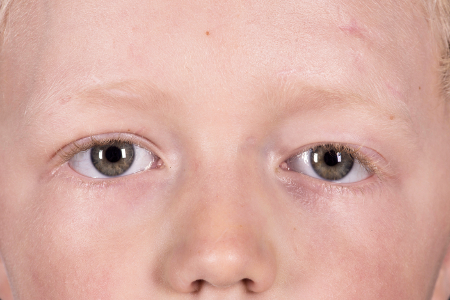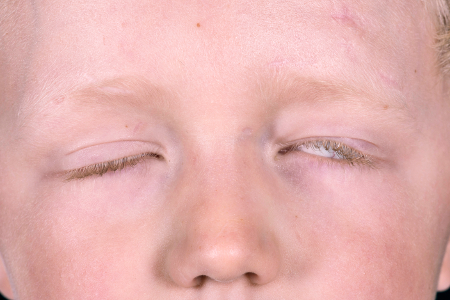Summary
Diagnósticos diferenciais
comuns
- Involutional changes
- Prolapsed orbital fat
- Dermatochalasis
- Congenital myogenic ptosis
- Thyroid eye disease
- Previous eye-related surgery or implant
- Chalazion
- Stye (hordeolum)
- Uveitis
- Orbital cellulitis
- Orbital inflammatory syndrome
- Eyelid tumors
- Orbital tumors
- Chronic progressive external ophthalmoplegia (CPEO)
- Stroke
- Eyelid foreign body
- Eyelid laceration
Incomuns
- Blepharophimosis
- Myasthenia gravis
- Multiple sclerosis
- Blepharochalasis
- Giant cell arteritis
- Preseptal cellulitis
- Globe malposition
- Benign essential blepharospasm (BEB)
- Third nerve palsy
- Horner syndrome
- Transection of levator muscle or aponeurosis
- Orbital and facial fracture
Colaboradores
Autores
Kiran Sajja, MD
Milan Eye Center
Oculoplastic Surgery
Johns Creek
GA
Declarações
KS declares that he has no competing interests.
Agradecimentos
Dr Kiran Sajja would like to gratefully acknowledge Dr Allen M. Putterman, a previous contributor for this topic.
Declarações
AMP declares that he has no competing interests.
Revisores
Ilse Mombaerts, MD, PhD
Department of Ophthalmology
University Hospitals
Leuven Kapucijnenvoer
Leuven
Belgium
Declarações
IM declares that she has no competing interests.
Alon Kahana, MD, PhD
Assistant Professor
Kellogg Eye Center
Assistant Professor
Ophthalmology and Visual Sciences
Comprehensive Cancer Center
University of Michigan
Ann Arbor
MI
Declarações
AK declares that he has no competing interests.
Créditos aos pareceristas
Os tópicos do BMJ Best Practice são constantemente atualizados, seguindo os desenvolvimentos das evidências e das diretrizes. Os pareceristas aqui listados revisaram o conteúdo pelo menos uma vez durante a história do tópico.
Declarações
As afiliações e declarações dos pareceristas referem--se ao momento da revisão.
Referências
Principais artigos
Finsterer J. Ptosis: causes, presentation, and management. Aesthetic Plast Surg. 2003;27:193-204. Resumo
Yanovitch T, Buckley E. Diagnosis and management of third nerve palsy. Curr Opin Ophthalmol. 2007 Sep;18(5):373-8. Resumo
American College of Radiology. ACR Appropriateness Criteria. Orbits, vision and visual loss. 2017 [internet publication].Texto completo
Artigos de referência
Uma lista completa das fontes referenciadas neste tópico está disponível para os usuários com acesso total ao BMJ Best Practice.
O uso deste conteúdo está sujeito ao nosso aviso legal



